
The painting “Sarakha – Good Arrow”. “Sarakha” in Sanskrit means “archer”. The “Great Brahman” Sarakha is one of the greatest yogis of India, he is a Buddhist Mahasiddha, that is, the Great Sage – Rishi. He was the Master of the great Nagarjuna, whom the Buddhist World honors as the Second Buddha.
In the picture of Nicholas Roerich, the Great Indian Teacher, Sage and Poet Sarakha is depicted in the foothills of the Himalayas, among the mighty Himalayan cedars – deodars, against the backdrop of mountain snow. He sits in a pose of meditation in a red monastic attire and headdress of a pandit – a learned brahman. He holds an arrow in his hands. The arrow is a symbol of Thought, a symbol of spiritual Help…
It is not by chance that Roerich calls the wise Sarakh “not lingering in good messages”. “In Eastern teachings, the conviction reigns that our thought is energy, real power, that good thought can help another person, regardless of his physical presence, if only thought is directed with heartfire and love.”
Saraha, the son of Dakini, was born in the city of Raleigh in eastern India. And although he was a brahman, he studied the Buddha Dharma and believed in Tantric teachings. He could walk on water, change the weight of his body, he was not burned by boiling oil and molten copper. Once he was in meditation continuously for 12 years. Thanks to his marvelous abilities, Saraha won an argument with the brahmans, and they renounced their faith and became Buddhists. Saraha was the first to introduce the teachings of Mahamudra, crowning all contemplative and religious practices.
According to the classic Tibetan iconography, Saraha is depicted as an old man, almost naked or slightly covered with cloth. In Roerich, however, Sarakh had a rather young man with wide cheekbones, dressed in a red robe and a conical cap – everything is typically Mongolian. Roerich’s character without a halo is far from the conventional canon tank, his appearance is lively, modern. The artist boldly stretches the thread from antiquity to the present. The hero of our days – the Mongolian lama received the Good News from the Great Rishi and St. Saraha.
Roerich witnessed the renewal of Mongolia, admired the uplift of the national spirit and wrote: “In the yurt camps and herds, the Mongols song is heard on the Gobi hills. Our Mongols are sung. The song of Shambhala, recently built by the Mongolian hero Suhe-Bator, sings:” We are going to the holy war of Shambhala. May we reincarnate in a sacred country… “The Mongols send their aspirations so vigorously and loudly… Through all the silent spaces of Asia, a voice is heard about the future.”
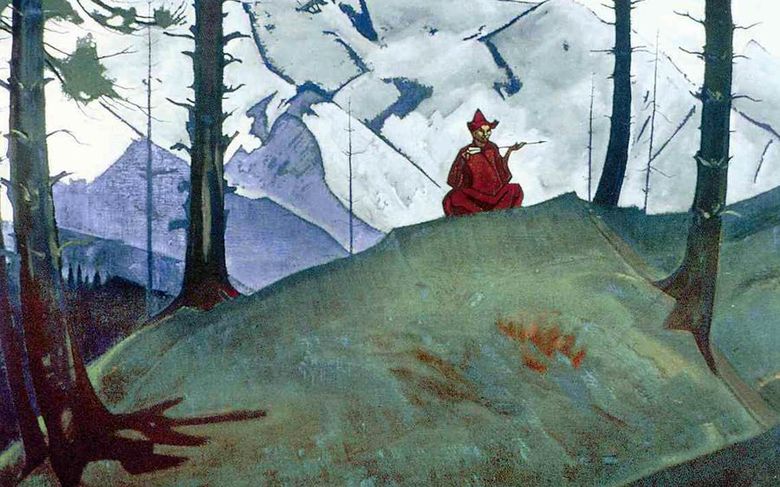 Sarakha – Bonne flèche – Nicholas Roerich
Sarakha – Bonne flèche – Nicholas Roerich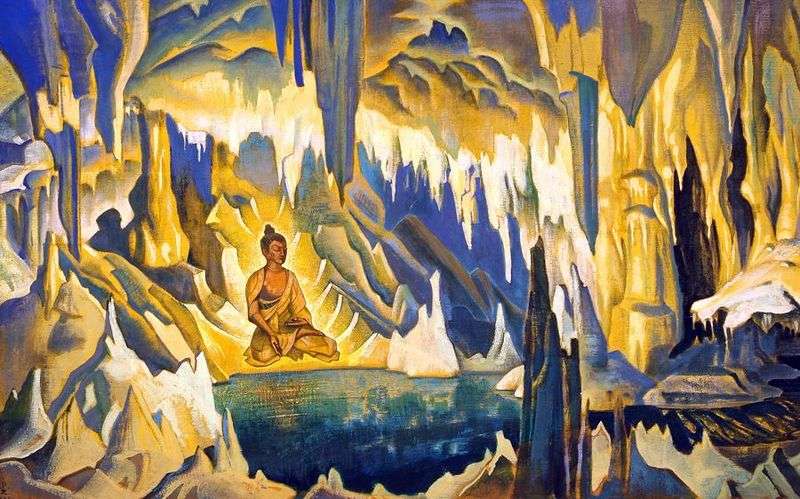 Buddha winner by Nicholas Roerich
Buddha winner by Nicholas Roerich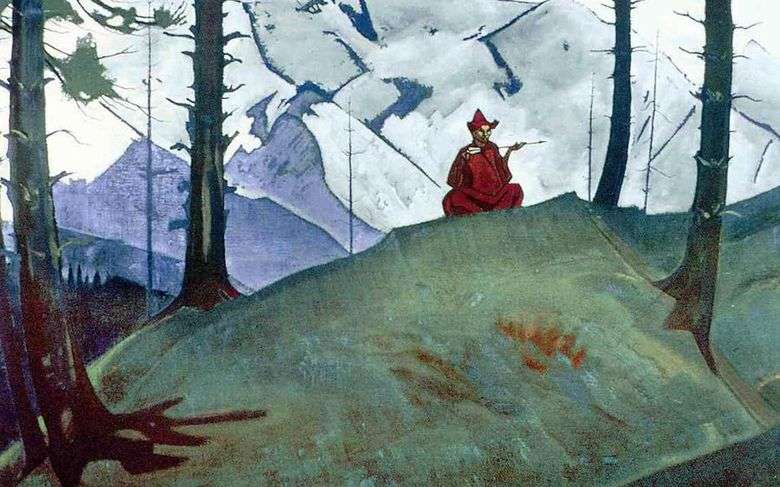 Saraj – Flecha Bendita – Nicholas Roerich
Saraj – Flecha Bendita – Nicholas Roerich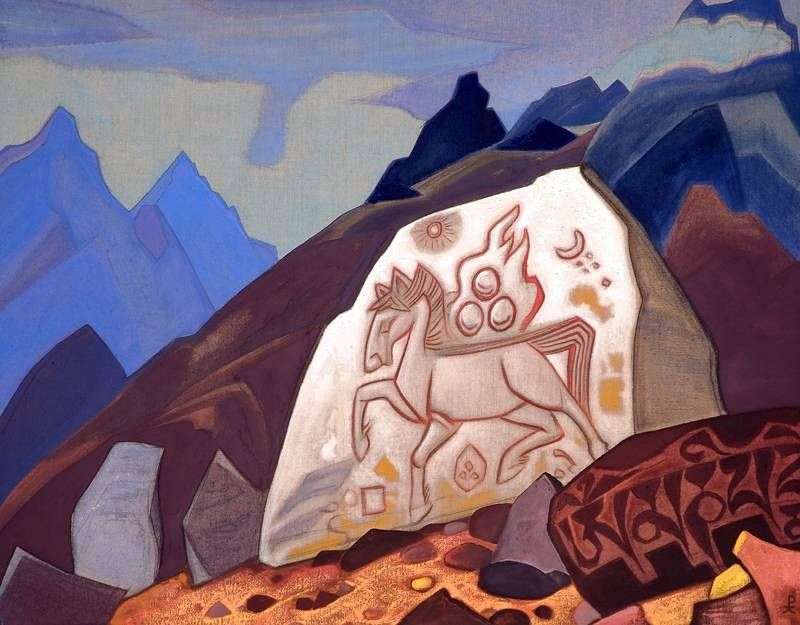 White Stone by Nicholas Roerich
White Stone by Nicholas Roerich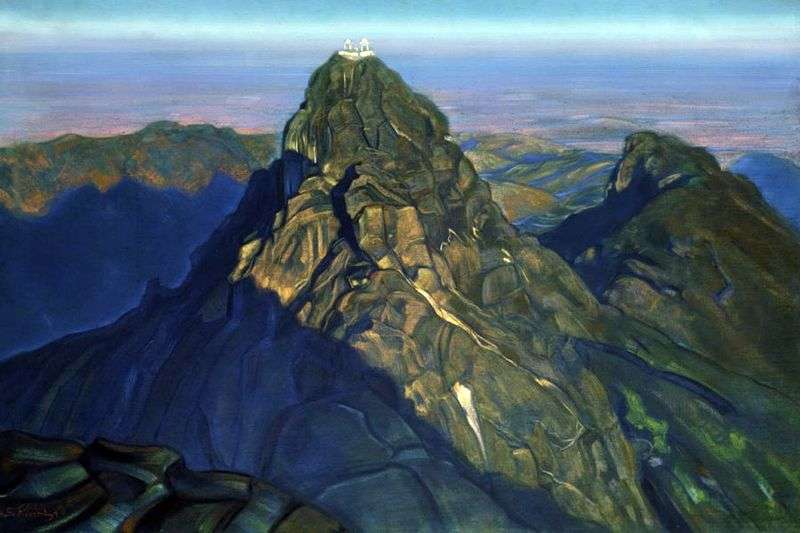 Girnar by Nicholas Roerich
Girnar by Nicholas Roerich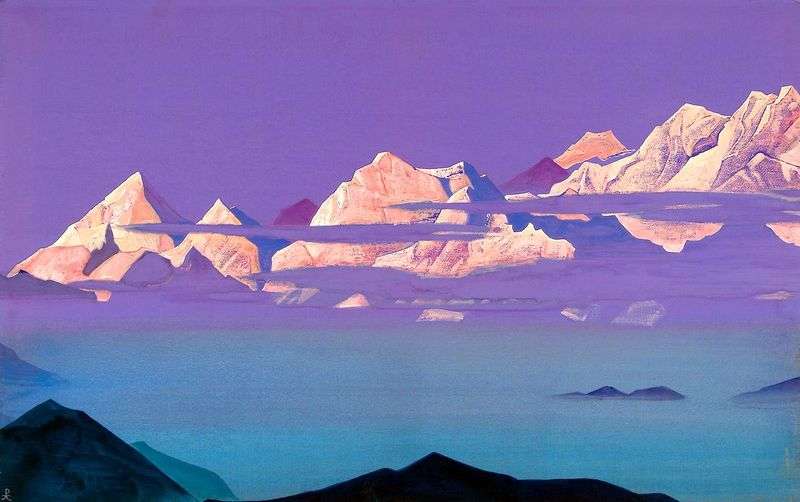 Himalayas. Pink Mountains by Nicholas Roerich
Himalayas. Pink Mountains by Nicholas Roerich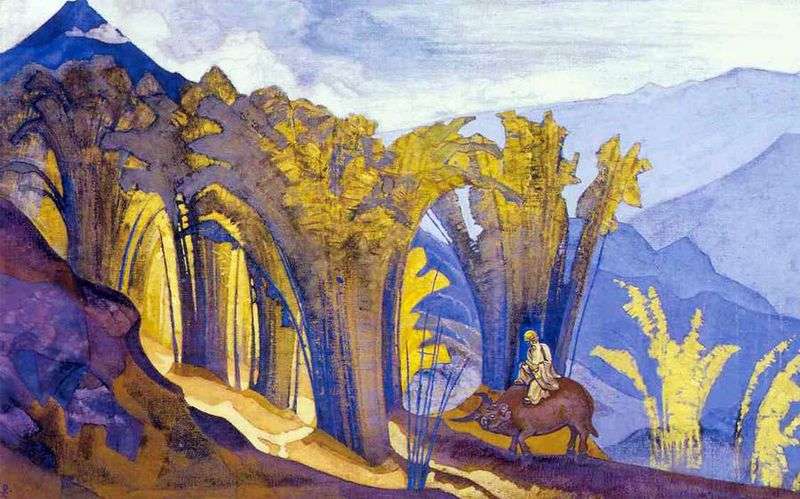 Lao Tse by Nicholas Roerich
Lao Tse by Nicholas Roerich Confucius the Fair by Nicholas Roerich
Confucius the Fair by Nicholas Roerich